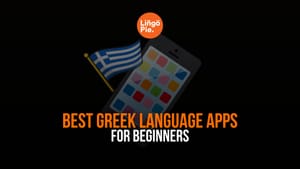The process of learning a language does not have to be all textbooks and formal education. There are various ways to make learning languages fun, such as by reading comics.
We will explain why comics are so good for learning a language and provide some recommendations for learners of several popular languages.
Moreover, we will detail some learning activities for writing, grammar, and vocabulary practice.
By the end of this guide, you'll know why comics are such good resources for language learning and how to use them to develop your language skills.

Table of contents:
- Why Language Learners Should Read Comics
- The Best Graphic Novels for Your Target Language
- Learning Activities
- FAQs: Language Learning with Comics
- Summing Up: Language Learning with Comic Books
Why Language Learners Should Read Comics
Reading comics is great for developing reading skills and grammar acquisition as you learn a language. Exposure to the written language will also help you to write, especially if you are learning a new script.
Comics are created for native speakers, so they feature natural and authentic words and phrases. This quality exposure to different languages is valuable for your learning.
If any of your favorite comics are translated into another language, you can start with those, as you have prior knowledge of the plot. This can make learning languages more accessible.
Remember, comics also feature many images, which provide more context for optimal understanding.
Over time, you will develop an understanding of grammatical structures from comics, such as conditionals, moods, tenses, and more.
You can also watch TV and movies in another language to develop your fluency. Find content on Lingopie, the streaming platform for learners of all levels.
The Best Graphic Novels for Your Target Language
French
Astérix le Gaulois ("The Adventures of Asterix"):

This graphic novel series depicts the adventures of Gaulish warriors who fight the Roman Republic with magic. Written by French comic writer René Goscinny throughout the 196os and 70s, the comic is an ahistorical telling of the era of Julius Caesar.
The images are bright and comical and lend themselves to younger readers, though Asterix can be enjoyed by everyone.
Gaston la Gaffe ("Gaston the Blunder"):
Unlike many other more action-packed comics, this French comic strip follows the day-to-day activities of Gaston LeGaffe, whose surname means "the blunder". Gaston is a clumsy man working at a magazine who never actually gets any real work done.
Instead, he causes explosions with poorly executed science experiments and generally gets himself into trouble.
Spanish
Mafalda

This classic old Spanish comic strip was created by Joaquín Salvador Lavado Tejón (known as Quino) in 1964. It is one of the most loved Argentinian comics of all time.
Mafalda is a little girl who is concerned about the environment and often defies the adults around her on her quest for world peace. Learn Spanish words related to the environment with Mafalda.
El Vecino ("The Neighbor")
Readers might also enjoy El Vecino, the Spanish comic about the life of a shy and studious man who moves into a new building and discovers his noisy neighbor is actually a superhero.
This fun comic was first written by Spaniards Santiago García and Pepo Pérez in 2004. El Vecino is a great source of new language relating to daily activities and superheroes.
Italian
Julia: le Avventure di una Criminologa ("Julia: The Adventures of a Criminologist"):
This comic follows Julia, a criminologist in the fictional Garden City, New Jersey, as she helps the local police to solve crimes. Julia frequently finds herself chasing down serial killers or stuck in whodunnit-style mysteries.
Julia was created in 1998 by Giancarlo Berardi and her physical appearance is based on Audrey Hepburn.
Lupo Alberto ("Alberto the Wolf"):

This is a famous Italian comic book created in 1974 by Guido Silvestri. Alberto is a blue wolf who is constantly trying to steal Martha the hen from McKenzie farm. Marta is Alberto's girlfriend.
However, Moses, the sheepdog, constantly foils Alberto's plans. These comic strips are kids' stories but are also loved by adults. This is a useful tool for beginners to learn farm animal names.
Portuguese
Balada para Sophie ("Song for Sophie"):
This graphic novel is a beautiful account of two young pianists whose paths cross in 1933 in a small village in France. Wealthy Julien Dubois meets the son of a janitor, François Samson, in a competition for young pianists.
This meeting sets both boys on a lifelong journey intertwined with success, failure, jealousy, war, and music. The graphic art is stunning.
A Pior Banda Do Mundo ("The Worst Band in the World"):

Created by José Carlos Fernandes in 2013, this bizarre but highly entertaining series of comics follows a band of jazz musicians who rehearse in the back room of a tailor shop.
The day-to-day lives of these men allow the author to explore a world of chaos, strange characters, and unlikely occurrences.
German
Nick Knatterton
This is a West German series of comics by Manfred Schmidt written throughout the 1950s starring a private investigator, Nikolaus Kuno Freiherr von Knatter.
These cartoony but clever comics used satirical humor to make jabs at the political climate of the 1950s. Nick's cases often involve wealthy aristocrats with a public image to maintain. Many of the villains are recurring characters.
Die Wolke ("The Cloud")
Based on a German novel written by Gudrun Pausewang in 1987 after the Chornobyl nuclear disaster in Ukraine, Anike Hage created this manga series in 2010.
Die Wolke follows fifteen-year-old Janna and her little brother as they seek safety, following a nuclear disaster in Germany.
Manga graphic novels have seen a surge in popularity over the past decade, and this one aims to highlight the dangers of nuclear to younger generations.
Reading comics is a great way to learn a language and also develop a deeper understanding of other societal issues.
Russian
КРАСНАЯ ФУРИЯ ("Red Fury")
This exciting series of comics follows a mysterious organization called the International Control Agency.
The mission of this special unit is to find the Holy Grail. The team is composed of five specialists from the US, China, Germany, the UK, and Russia.
Nika Chaikina is a Russian member and she is a master at infiltration and covert operations. Red Fury was written by Sergey Volkov and Artem Gabrelyanov.
Breakers O'Silence
When a music producer gets desperate in his quest for popularity and success, he resorts to black magic. As a result, he creates a band of newly awakened undead musicians.
The living dead band, called the Breakers O'Silence, is an instant hit and its members have to navigate their newfound fame.
This comic was created by Daria Konopatova and Maria Konopatova. Read Breakers O'Silence to discover some new vocabulary related to magic and music.
Japanese
ゴルゴ13 ("Golgo 13"):

Written and illustrated by Takao Saito, this is one of the most popular manga comics in Japan. Golgo 13 is an assassin, whose real name, age, and place of birth are unknown to the intelligence services.
He is a quiet man who only talks when he must and is willing to kill anyone who can expose him.
金田一少年の事件簿 ("The Kindaichi Case Files"):
This Japanese manga is about school students who solve mysteries and catch vicious killers. Often, the crimes they investigate involve locked room mysteries or other complex circumstances that require logic to solve.
Writers Yōzaburō Kanari or Seimaru Amagi add depth to the plot by giving traumatic backgrounds to the killers in these comics. This makes them somewhat sympathetic characters.
Korean
마제 ("King of Hell"):
Written by Ra In-Soo, these comics follow Majeh, who was a powerful warrior in life. In death, he is the servant of the king of hell. When evil spirits escape captivity, Majeh is allowed back into the world of the living to hunt them down. The dialogue, comedic expressions, and one-liners make this a very enjoyable read.
베리타스 ("Veritas"):

This manhwa (the Korean word for comics) was written by Yoon Joon-Shik. It follows Ma Gangryong, a school-aged boy who gets into fights with other students.
Veritas makes for a thrilling reading, as Gangryong is mentored by a mysterious man called Lightning Tiger. He learns how to use his ch'i to create vicious lightning attacks.
English
Garfield

This famous American series of comic books is about a fat orange cat who hates Mondays. Created by Jim Davis, these stories follow Garfield's day-to-day life as he puts up with Odie the dog and his owner, Jon.
This is not an adventure story, but rather a love letter to lasagne and coffee. Garfield loves to eat and hates to diet. Despite the lack of action, the comics are hilarious.
Dennis the Menace
Also published under the titles Dennis and Gnasher and Dennis the Menace and Gnasher, this is a series of British comics about a mischievous young boy and his dog, Gnasher. Dennis wages war on Walter the Softie, a well-behaved boy.
Dennis the Menace was created by George Moonie, David Law, and Ian Chisholm and has been running since 1951. Despite its long run, Dennis never develops into a kinder or better-behaved character!
Mandarin Chinese
長歌行 ("The Song of the Long March"):

This dark Chinese comic book by Xià Dá follows a young girl whose family is killed in a coup. She disguises herself as a boy and joins the military to avenge the deaths of her family members. This is like Mulan without the Disney cheer.
封神記 ("The Legend and the Hero")
In this gripping Chinese manga, the Gods and humans coexist in the same world. But when the Gods decide they do not like the new Emperor and ask him to step down, he launches a war against the deities. The humans try to free themselves from the Gods' control once and for all.
Learning Activities
We recommend reading comics in other languages that are intended for children if you are an absolute beginner. Then, use the images as resources to help you understand the meaning.
As you read these foreign titles, you will pick up on simple grammar points, like tenses, sentence structure, and forming questions. You can read with a dictionary nearby if you need to search for new language.
A great learning activity is to create your own dialogue for the protagonists of your favorite comics. This allows you to practice using the language in the context of a story. You can keep all of your writing and look back over it to see your progress.
You should also note useful vocabulary in foreign languages as you read. Learning a new language is a long process and making lists or flashcards of new vocabulary is a great way not to forget.
If the comics you are reading have been adapted into TV cartoons, you can extend your foreign language education by watching the series too. The more natural exposure you get to your target language the better.
Search for a comic book app so you can read on the go. This will allow you to get five minutes of practice here and there.
FAQs: Language Learning with Comics
Can I improve my English by reading comics?
Yes, you can improve your English with comics. Of course, it is best to find comic books in English that deal with themes you enjoy, as this will make learning fun.
Graphic novels are a great tool for picking up new words in context. Any word you don't know can be translated online or with a dictionary.
Can you learn a language with just a comic book?
It is effective to read comics when you are language learning. We recommend you use these resources in conjunction with other learning tools, such as language apps, foreign language TV shows and movies, and even lessons for the best results.
How do comics help with language learning?
Comic books help with language learning because they offer an insight into the culture and society of the places where your target language is spoken. Moreover, they expose you to slang and useful idiomatic phrases in an engaging way.
Of course, the point is not to study language in a super academic way, but to learn through engagement and enjoyment.
What are the best foreign language comics for language learners?
There are many comics ideal for language learning, some of which are mentioned above. Really, any content written for native speakers of your new language will work. Just make sure you are reading content at an appropriate level for your language-learning journey.

Summing Up: Language Learning with Comic Books
Now you know how to learn a language with comics and why they are such a good tool for developing language skills.
We have provided some recommendations for comics in several popular languages. This list is far from exhaustive and there are countless more titles to discover in many languages.
Remember, you can determine meaning from images to help you understand graphic novels. Over time, you will deepen your knowledge of vocabulary and grammar with comics.As well as reading foreign language comics, you should listen to music and watch TV shows and movies in other languages. Have fun learning a language with awesome Lingopie content!







![How Many Italian-Speaking Countries Are Out There? [2025 Data]](/blog/content/images/size/w300/2025/06/Italian-speaking-countries.jpg)

